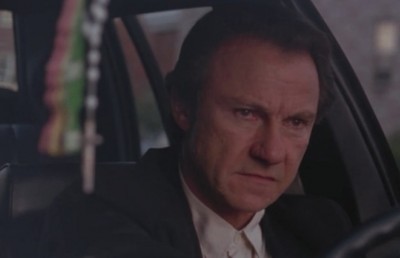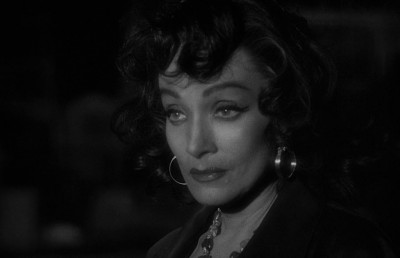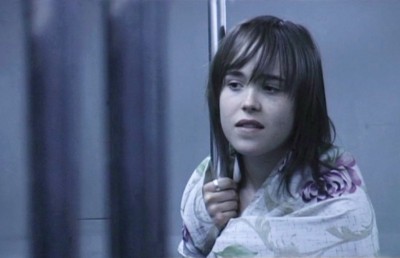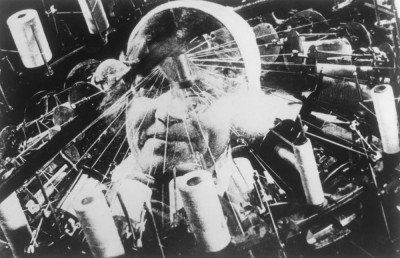On the Objects in Days of Heaven
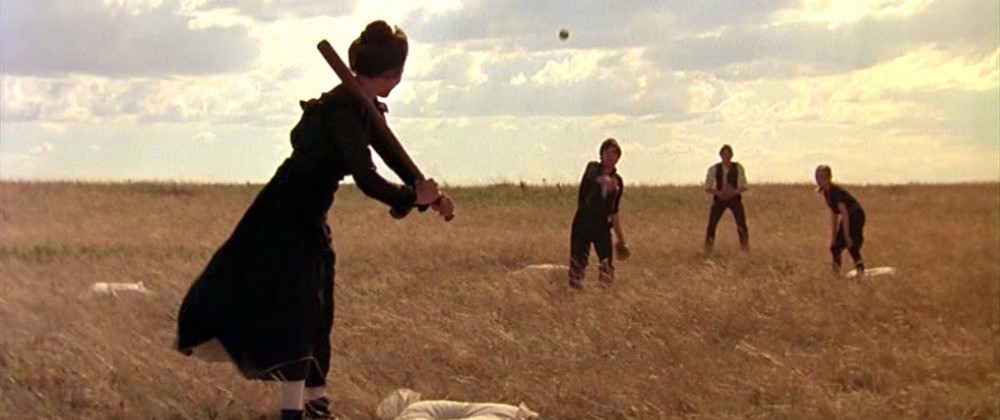
Malick’s films are often called beautiful (or at least, negatively, pretty), in reference to their images. What is interesting about the images, though, is that they are not made beautiful. Indeed, what is most often emphasized by Malick and his cameramen about the images is that they are after images achieved under certain non-intrusive conditions, in terms of lighting, or certain camera equipments, or minimal special effects, and such. Yet, the subjects of the films (war, killing spree, exploitive farm labor, etc.) are not intrinsically about beauty either (in fact, it would have been easier, and more natural, to shoot them as ugly-looking). In other words, beauty, at least in Malick’s films, is neither something we impose onto the world, nor something we straightforwardly perceive.
So, if we are to think of Malick’s images as more “recorded” rather than constructed, then such conception of film naturally brings up the question of the nature of cinematic images, and Malick, at first sight, seems to be an unproblematic realist, if realism is understood as replication of reality. Then what is reality? Reality contains things, people, society, animals, and realism represents such faithfully. And realism (as opposed to expressionism) in cinema stylistically has to do with long-takes, deep-focus photography, unobtrusive editing, and naturalistic acting. Under these specific criteria, though, Malick’s films cannot be neatly classified as realist; the films do employ deep-focus photography, and while they occasionally have images held on for long duration, they are also edited heavily and not particularly unobtrusively. Malick’s editing often tends to be blunt and sudden, and without strict continuity. As far as acting is concerned, some question whether Malick has the aptitude for creating well-rounded characters. But what may be the most distinctive thing about Malick’s films is their heavy incorporation of the images of non-human entities.
The presence of these images is often “read” into too much, however, even if not in any crudely symbolic or reductive terms. What is Malick trying to say by the images? Are they protestations against anthropocentrism? Or are they saying that nature is uninterested in the humankind? Of course, they are about all of those things thematically, but then the repetition of such images throughout the films becomes simply overkill. If a point has been made, why repeat it over and over again? Then what are exactly shown in those shots? Grass, trees, flying birds, water flowing, mountains, everyday objects. Well, nature, things, reality!
What Malick shows in those images, it seems to me, are certain aspects of reality that often elude our, and the films’ characters’, experiences; in the images, whether by the degree of the sharpness, or the contrasting of different elements, certain aspects tend to emerge, which might not even be apparent the first time one sees the images. Yet if we think of reality in terms of disparate objects and ourselves as the subjects who perceive them, as we usually do, then such aspects are liable to be thought of as, in principle at least, something that can be perceived all at once, given sufficient amount of attention. It sounds positively absurd to say that different aspects emerge in an image, as if created anew as one becomes aware of them.
But, for example, consider the first shot of The New World (2005): at first sight, it shows itself to be the surface of water with reflections on it, and as the camera cranes over it ripples form on the surface and the reflections disperse, and then what is submerged under water gradually comes into view. In a simple, unbroken shot, distinct aspects literally show themselves up (and fade away) without any manipulation of what is being observed. Now it is difficult to describe this shot in terms of what is being shown given that if “what” is considered as an entity, it is nothing but a shot of the surface of water, but we clearly do not experience it just as such. (Moreover, what emerge and fade away are not just what we see, but also what we hear and think, as the film’s soundtrack and the voice-over demonstrate: “Come, spirit….we rise, from out of the soul of you.”) In short, just experiencing the world is a much richer and more varied notion than our understanding of reality allows it to be.
And consider some of the recurrent images in Malick’s films, where one aspect is shown to be inextricably linked with the other; such as the image of light shining through various gaps, on insect-eaten leaves, or between trees in forest or dense greenery. Light illuminates everything, yet it only shows itself clearly when it is partly obscured. Or the image of grass billowing in the wind. Air is everywhere, yet it only shows itself by what it moves along with. Even though light and air are the sources of illumination and movement, it is as if they emerge from the hidden, once you are aware of their presence.
If realism, as stated, is replication of reality, then reality, as Malick sees it, cannot be captured in terms of what are statically present in an unrelated, isolated manner, waiting to be perceived by subjects. It is suggestive that Heidegger, one of Malick’s formative influences, claims reality in any sense should be thought of in terms of emergence and withdrawal, after the Presocratics, rather than static presence. As a certain aspect appears, certain other aspects retreat into the background (or more exactly, in order for a certain aspect to appear, certain other aspects must retreat into the background, as with the Necker cube or duck-rabbit picture. [1] Heidegger even believes that the understanding of reality as wholly available for mastery is responsible for, among other things, the modern ecological crisis. [2]
The images of nonhuman entities also have internal functions specific to the films. The images show the aspects that recede into the background for the characters: animals living in the midst of wheat field do not show up conspicuously to a farmer driving a harvester through it, nor blades of grass to soldiers in the midst of a battle, nor, in fact, any old objects around us, whether they be potted plants, or doorknobs, or wine decanters, in the midst of everyday life. Usually a shot of an object is either a piece of narrative information or a subjective point of view shot indicating what a character is looking at. But in the midst of a scene, Malick will cut to an object nearby even though it is not being looked at by any of the characters, or sometimes he will show a character looking at something, and then cut to an object that the character is not looking at (or at least it is ambiguous). Cuts such as these end up giving you the impression that the object is being aware of the subject who is unaware of its presence. So, reality in general cannot be mastered fully, neither for us, nor for the characters in Malick’s films.
Even when Malick cuts to a point of view shot, he often tends to undercut subjectivity rather than accentuating it. As stated, a point of view shot is usually used to clearly demarcate the subjective realm from the objective realm, so that it draws the attention to the subject and what he is looking at in his immediate vicinity. In Days of Heaven (1978), however, there is a scene early in the film where there is a close-up of Bill (Richard Gere) turning his head to look at something that caught his attention and then a cut to a bird flying away from a faraway distance, thereby accentuating not what he is looking at but the sheer physical distance between him and the bird. Yet the scene does not take place in a purely disembodied, third-person space either, for the distance is conveyed in relation to him: it is not trying to convey the information of the quantitative distance between the two, but the experience of the sheer size of the land, which is neither something occurring just inside of him nor outside of him.
And when Malick uses a point of view shot in a conventional manner, of placing it between the shots of the subject who’s looking at the object, where both the subject and the object are shot from a similar distance from the camera, he often holds the shot of the object a little too long, thereby giving you the impression that the object is looking back at the subject, as much as the reverse. The space conveyed in the point of view shot becomes, similar to the scene of the bird flying away, neither a completely subjective space limited to the character, nor an objective, third-person space. [3]
In effect, Malick has chosen not to think of various experiences that human beings can have in terms of categories (cinematic or otherwise) subjective and objective, or inner and outer because many of them cannot really be categorized in such terms, even something as commonplace as perception. In theory, perception seems to happen predominantly inside of our minds, with our impressions of things. But consider again someone looking at a bird flying away: he needs to turn his head, and in order to continuously follow it he needs to turn his whole body as well, or run after it. In other words, perception is as dependent on our bodies in the outer world as much as what’s going on inside of us, and the thing perceived beckons us as much as the other way around.
Or another example: Is the experience of sadness a subjective or objective phenomenon? If one insists on the distinction, then one would think it is a subjective mental phenomenon specifically limited to the one who feels sad, so that one has to look inward to oneself in order to know what it is, and one cannot know whether other people are sad by just looking at their outer, physical selves. But such claim is manifestly false, given that one can often see by people’s faces and behaviors that they are sad, nor does one look inside oneself to find out that one is sad.
Or consider the experience of a picture or a melody, or the sight of a sunset, or the sound of falling rain, as saturated with sadness. Again, if one starts out with the distinction between the subjective and the objective, one would think the sadness is not inherent in the physical image or the sound, but is more like a subjective coloring caused by something inertly physical. But one can not separate the bare subjective sadness out of the sad picture, nor the bare objective picture out of the sad picture; or, whatever that we encounter is, if we are phenomenologically conscientious, neither strictly subjective nor objective (and indeed, in complete objectivity, subjects disappear, and in complete subjectivity, objects disappear). [4]
Accordingly, Malick disputes the notion that understanding a person’s mind has to do with knowing something hidden inside his or her skull (which is not to say that the understanding is always possible), for our mental concepts are logically tied to how people do act. Little is said about what the characters are thinking “inside” in Days of Heaven, but a great deal is shown in terms of just how they act, with things and other people: Abby (Brooke Adams) says early in the film “I could’ve been a dancer,” and in a later scene she is shown practicing dance steps (and in three separate scenes she is shown alongside a phonograph, which she is shown to be playing when she is practicing), and near the end she enrolls Linda (Linda Manz) at a boarding school which is possibly a dance school. One can simply see (if one chooses to see it) that not being a dancer holds a great deal of significance for her in her life.
One can also see what kind of a person Bill or the Farmer (Sam Shepard) is by looking at how each acts: the Farmer has the inkling of shooting, at first, Abby, and then Bill, upon discovering that he has been deceived, and he hesitates on both occasions, and then gets stabbed by Bill with a screwdriver. Of course, one can guess what is going on inside his head (possibly certain mental images flashed by) when he hesitates both times, but what is more striking is the fact that some people are just not capable of killing another human being, even with a gun, without hesitating and giving another thought, whereas some people, out of self-protective instinct perhaps (which would say much about Bill’s past), can kill another person with almost any means.
Because the characters are shown to be constantly interacting with things, certain things they are in contact with become distinct parts of their lives, and, indeed, characters in their own right in the film, with their separate lives concealed in the background. Often Malick puts (or “hides”) an object in the midst or corners of a medium or long shot, and later that object is seen up close, or vice versa. There are numerous instances (of a stone figure, a parasol, a bicycle, a hat, a necklace, etc.), but the most significant involves the presence of a potted plant and a pair of identical crystal wine glasses: there are different (but similar-looking) potted plants, as well as different (but also similar-looking) crystal glasses shown at different points in the film and Malick tries to convey the individuality of each one of them by contrasting one with the others.
The potted plant and the crystal glasses first make their appearances in the film when Bill sees the inside of the Farmer’s house for the first time: as he looks around the rooms and the things in them, one of them we notice after scrutiny is the potted plant placed near the center of the frame (fig. 1). The crystal glasses with a decanter make their appearance a moment later seen up close (fig. 2). The glasses make their appearance again a few sequences later when the four main characters are shown having a meal in a gazebo, inconspicuously occupying the center of the frame (fig. 3). At this point, if one has seen the film before one may recall the shot of a glass that Bill drops in the river during a tryst with Abby, submerged under water, shown in a close-up (fig. 4). As it turns out, this glass is not one of the pair we have already met, and at another point in the film, both the potted plant seen in fig.1 and the glasses seen in fig. 2 and 3 make their appearances again.


They are seen later in the film when Bill returns from his excursion in Chicago: he glances over the front porch of the Farmer’s house, sees a bicycle and a potted plant (fig. 5) and recognizes the doorknob (that we see him touch in the earlier scene in the Farmer’s house described above). Again, the potted plant in fig. 5 turns out to be a “double” of the potted plant in fig. 1, and as Bill and Abby reunite at the front of the house (pointedly, neither makes physical contact), there is an almost distractingly sudden cut to another potted plant situated inside the house (fig. 6), which turns out to be the potted plant in fig.1, as if the plant itself recognizes that Bill is back, too! After Linda and the Farmer also greet him, they all move into the house one by one, and we see, discreetly placed within the frame (fig. 7), the potted plant in fig.1 and fig. 6, and the pair of glasses in fig. 2 and 3, as if they too are a part of this reunion.

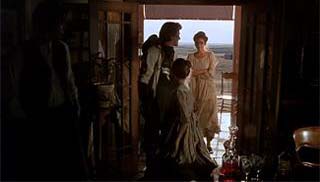
On a storytelling level, these shots and arrangements of objects mean little, but it is unconvincing to say that these objects are filmed arbitrarily, as their purposes have been sometimes described, given the deliberate ways they are placed within the shots, and picked out and seen in close-up. Then what, exactly, do the images of the objects do? As stated, Malick makes the objects emerge as things tend to hide in the background of human lives and conflicts, just as nature loves to ‘hide’ in the background of human affairs, particularly in the forms of life that we inhabit. In other words, in order for human lives to manifest themselves, the presence of things must withdraw into the background. On the other hand, when things are seen up close being severed from the stream of human lives, their presence becomes obtrusive and foreign; or in order for them to appear as mere objects, human presence and the various human practices that involve them withdraw into the background.
Of course, it is not for the lack of attention that the presence of things escapes our notice when we look at a cinema screen, given that they do not intrude into our awareness in everyday life either, especially when we are engaged in practical activities. If it were the case that we have to be conscious of them during such activities, we wouldn’t be able to proceed effortlessly, just as we can’t be conscious of our bodies and their movements during such activities. Yet because objects usually remain in the background of our lives, it is tempting to think that they lack intrinsic meaning and value and it is we who arbitrarily impose (and remove) meaning and value on them, which would be no more valid than because it is we who perceive sadness in other people, the sadness is something we arbitrarily impose onto other people. Things are made and used by us, yes, but they are just as constitutive of the world as we are, or, again, the world cannot be apprehended in either completely subjective or objective terms. [5] And Malick’s films constantly remind us of this, as things often look at people in secret of them, more so than the reverse.
Endnotes
1 The Necker cube and duck-rabbit picture are ambiguous figures/drawings with two distinct aspects, or gestalts, that cannot be seen simultaneously. They are both discussed by Wittgenstein, another thinker Malick studied, in his Tractatus Logico-Philosophicus, C. K. Ogden (trans.) (London: Routledge, 1922) and Philosophical Investigations, G. E. M. Anscombe (trans.) (New York: MacMillan, 1953)
2 See Heidegger, “The Question Concerning Technology,” in The Question Concerning Technology and Other Essays, William Lovitt (trans.) (New York: Harper and Row, 1977)
3 The primary space in Malick’s films is such public space shared with other people, nature, and things but experienced in terms of an embodied perspective (hence, his preference for hand-held and steadicam shots): there are hardly any tracking shots from a disembodied perspective or aerial shots in Malick’s films, and they are full of images seen looking up from the earthbound perspective, but not the reverse. A conspicuous exception, though, is the shot of the kitchen seen from the ceiling level in Days of Heaven, shown at the beginning of the locusts’ attack.
4 The ideas of this sort are present in the works of Wittgenstein, Heidegger, and Merleau-Ponty, and Malick’s exposure to them seems to me to be likely. In The Thin Red Line and, in particular, The New World, though, much more attention is given to specifically subjective experiences, such as memories, mental images, sensations, imagination and so on than the earlier films, in relation to, it seems, particular kinds of characters and how they experience the world.
5 Even making things is not something wholly dependent on our decisions, so that we can arbitrarily decide in advance how to do it. For instance, it is not an arbitrary decision on our part that books are made of paper instead of metal, nor is it arbitrary that spoons are made of metal instead of paper. While it is granted that they are human artifacts, and not natural substances, the natures of books and spoons require that they should be made of appropriate materials.


